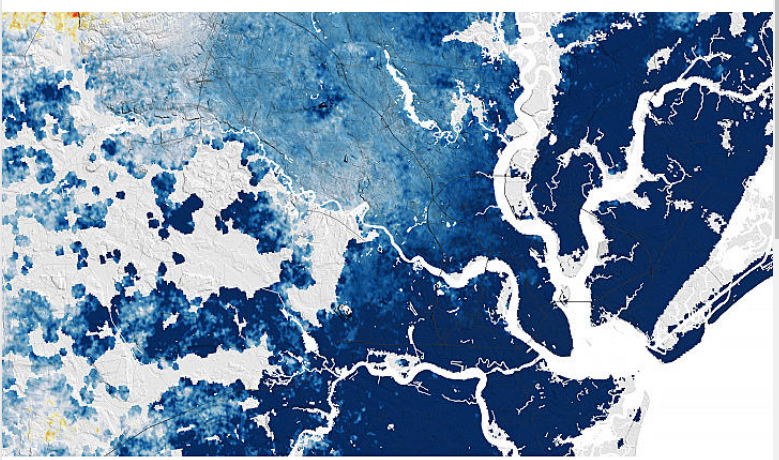New images released by NASA have raised concerns about the sinking of land in parts of the East Coast, posing a significant threat to critical infrastructure and exacerbating the impact of global sea level rise.
Dubbed “America’s Sinking East Coast,” NASA’s latest findings highlight the alarming trend of land subsidence affecting major cities and regions from New England to Florida. The research, conducted using satellite data and ground-based GPS sensors, reveals troubling vertical and horizontal motions of coastal land.
According to NASA, the sinking land poses a serious threat to critical infrastructure, including highways, railways, airports, dams, and levees. At least 867,000 properties are at risk due to subsidence, raising concerns about the safety and resilience of coastal communities.
One of the most alarming revelations from the study is the sinking of major East Coast cities, including New York City, Baltimore, and Norfolk. Between 2007 and 2020, these urban centers experienced significant land subsidence, with New York City sinking by 1 to 2 millimeters per year.
The implications of land sinking are profound, amplifying the challenges posed by rising sea levels and climate change. As coastal land continues to subside, it increases the vulnerability of communities to flooding, storm surges, and other climate-related hazards.
The sinking of land in the East Coast underscores the urgent need for proactive measures to mitigate the risks associated with subsidence and sea level rise. NASA’s findings serve as a wake-up call for policymakers, urban planners, and residents to prioritize resilience and adaptation strategies to safeguard coastal infrastructure and communities.

In response to the growing threat, stakeholders must work together to develop robust adaptation plans that incorporate innovative engineering solutions, green infrastructure, and land-use planning measures. By investing in resilient infrastructure and implementing proactive measures, communities can enhance their capacity to withstand the impacts of land subsidence and climate change.
Furthermore, public awareness and education play a crucial role in building community resilience and fostering a culture of preparedness. Empowering residents with knowledge about the risks of land sinking and sea level rise can help mobilize support for adaptation efforts and encourage proactive action at the local level.
Read More News:
- Trump Asserts Wealth Makes $90 Million Bond Unnecessary in Defamation Case
- Clifton’s Rising Star: Hailey Mia’s Journey from New Jersey to American Idol
- Unprecedented Opportunity: 42-Acre Estate Adjacent to Caladesi Island State Park Hits the Market for $37.5 Million
As NASA’s latest findings underscore, the sinking of land on the East Coast is a pressing issue that requires immediate attention and concerted action. By addressing the root causes of subsidence and implementing adaptation measures, communities can build a more resilient and sustainable future in the face of climate change.

